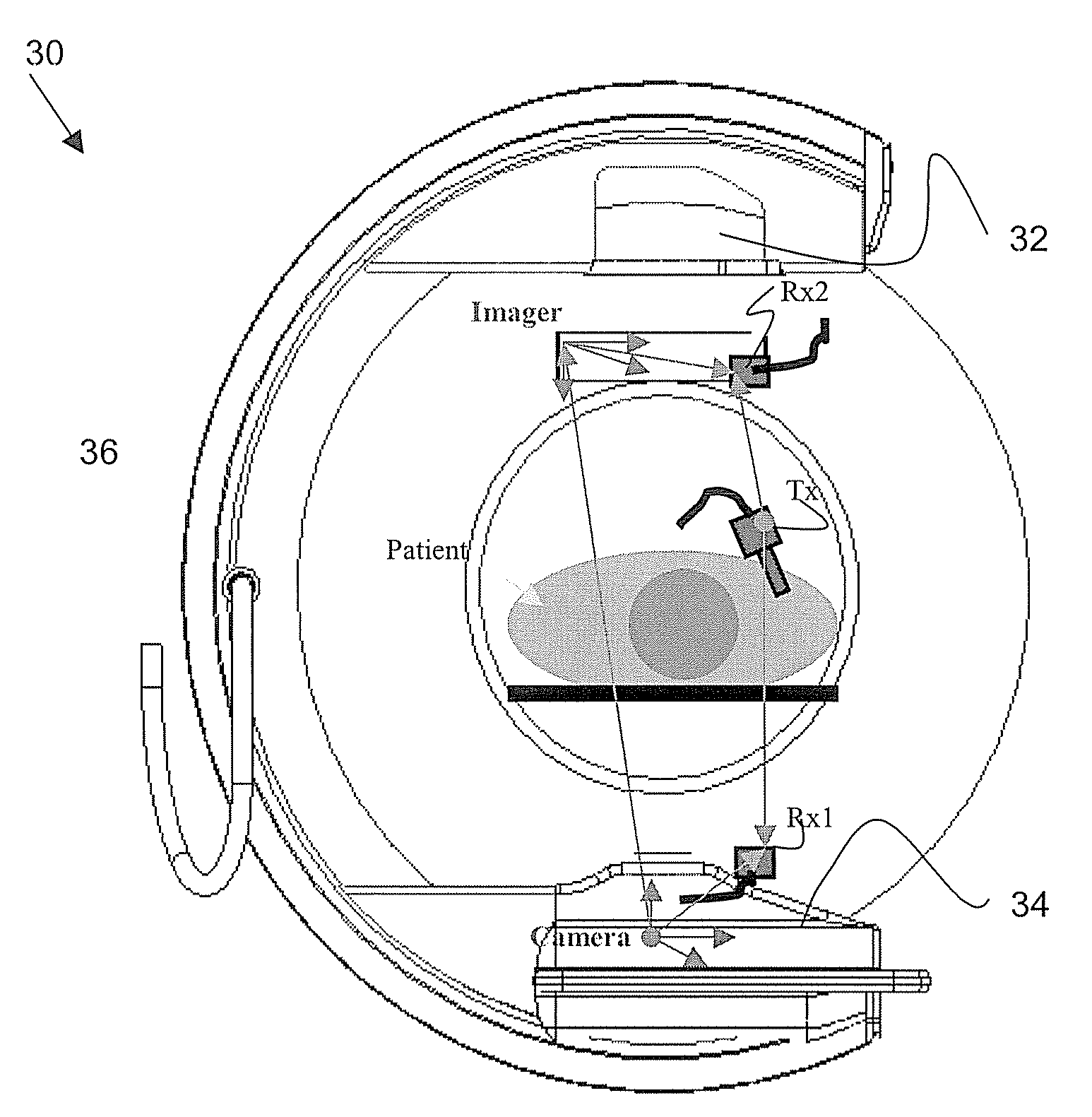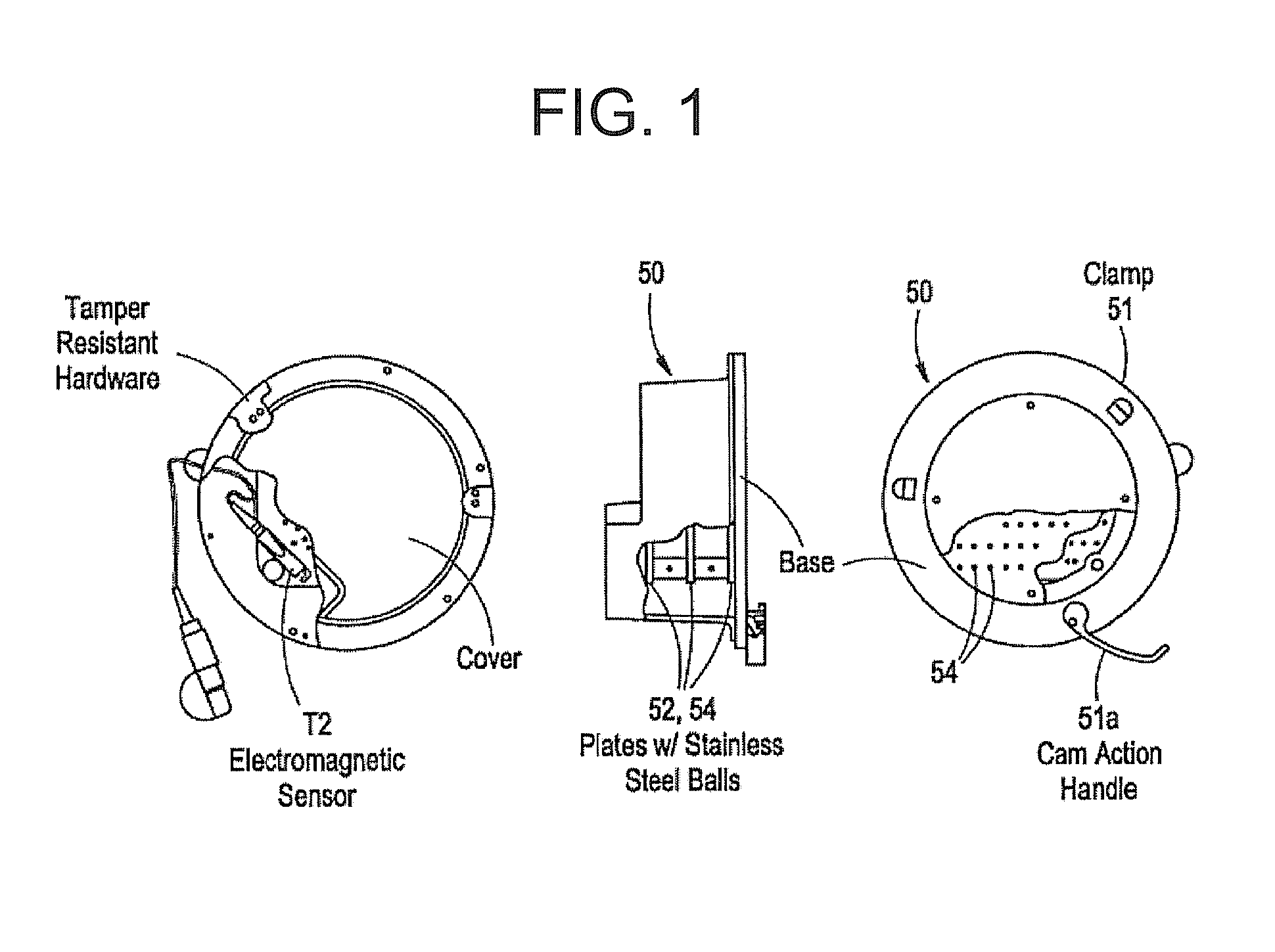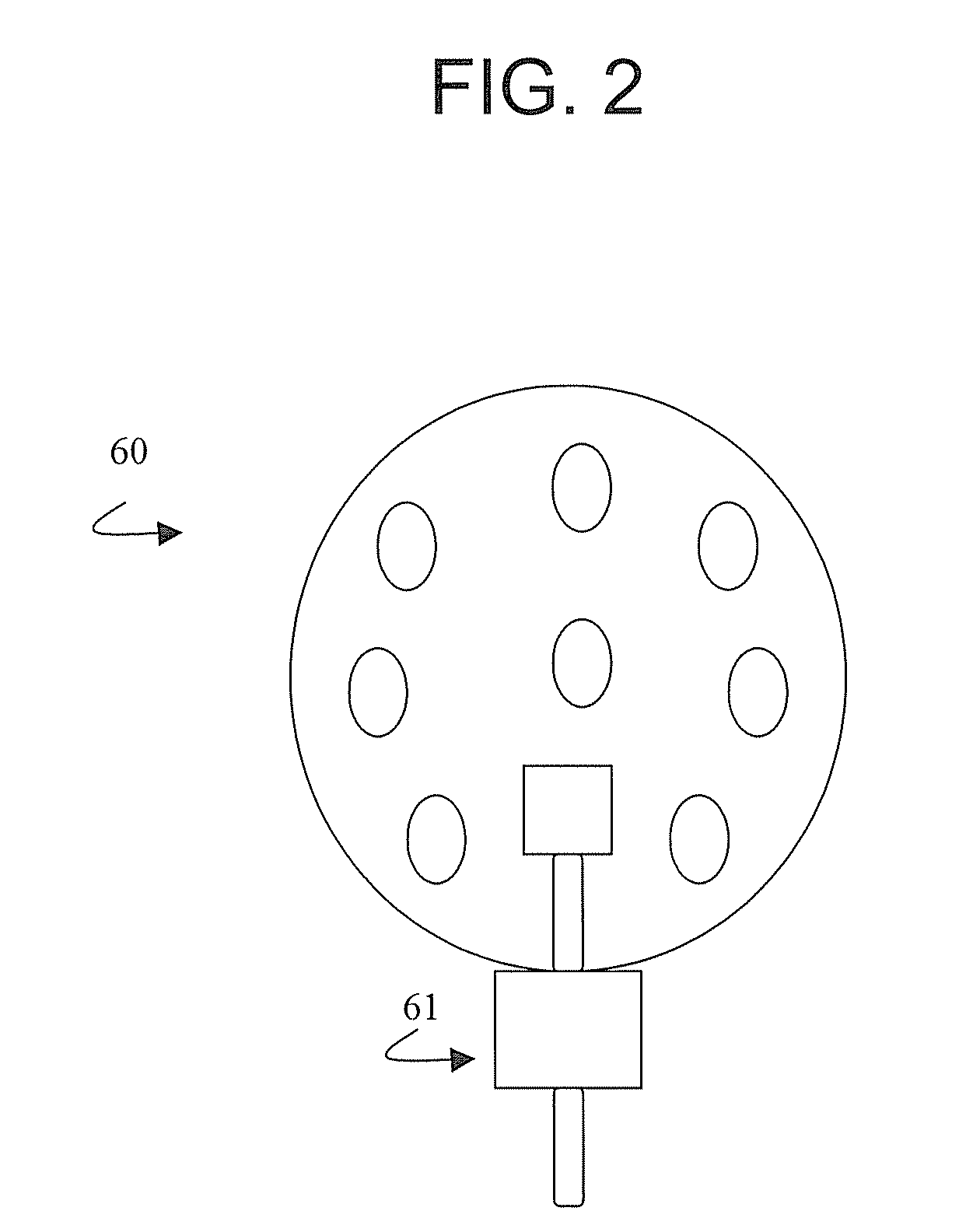Systems and methods for on-line marker-less camera calibration using a position tracking system
a position tracking and markerless camera technology, applied in the field of imageguided navigation, can solve the problems of affecting the optical or acoustic signal path of the signal elements they employ, the distortion of the fluoroscopic view, and the low repeatability of the intraoperative x-ray image taken by the c-arm fluoroscope alone, so as to improve the registration and tracking accuracy of coordinate frames
- Summary
- Abstract
- Description
- Claims
- Application Information
AI Technical Summary
Benefits of technology
Problems solved by technology
Method used
Image
Examples
Embodiment Construction
[0052]FIG. 3 illustrates an imaging system 30 in accordance with an embodiment of the present invention for use in an operating room environment. As shown in FIG. 3, the camera system 30 includes an imager 32, a camera source 34, a structural support member 36, sensors Rx1 and Rx2, and a transmitter Tx. The imager 32 may be an x-ray detector, for example. The camera source 34 may be an X-ray generator, for example. The structural support member 36 may be a C-arm, L-arm, O-arm and / or other structure supporting the imager 32 and source 34.
[0053]For example, the imager 32 may be mounted on the structural support member 36 opposite the camera source 34. The support member 36 moves about a patient or other object to produce two dimensional projection images of the patient from different angles. The patient or object remains positioned between the imager 32 and the source 34, and may, for example, be situated on a table or other support, although the patient / object may move.
[0054]Sensor R...
PUM
 Login to View More
Login to View More Abstract
Description
Claims
Application Information
 Login to View More
Login to View More - R&D
- Intellectual Property
- Life Sciences
- Materials
- Tech Scout
- Unparalleled Data Quality
- Higher Quality Content
- 60% Fewer Hallucinations
Browse by: Latest US Patents, China's latest patents, Technical Efficacy Thesaurus, Application Domain, Technology Topic, Popular Technical Reports.
© 2025 PatSnap. All rights reserved.Legal|Privacy policy|Modern Slavery Act Transparency Statement|Sitemap|About US| Contact US: help@patsnap.com



